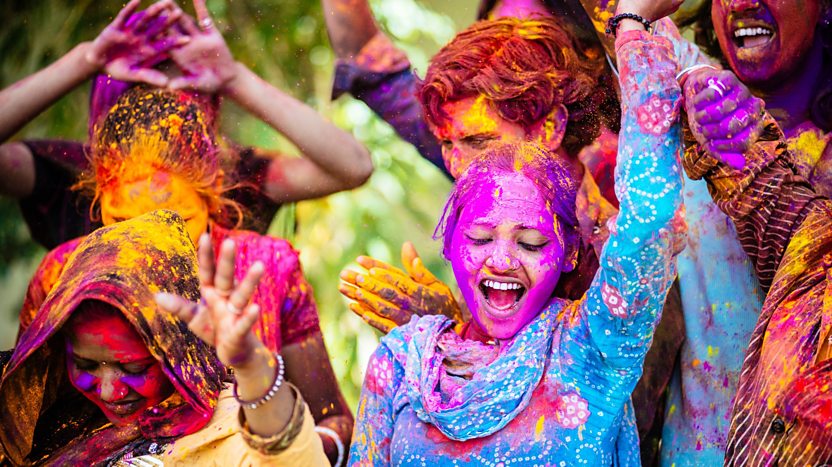Happy Holi Wishes
8 March 2023

Many of our Hindu pupils will be celebrating Holi this week, also known as the Festival of Colours.
With the throwing of coloured powder and water balloons, Holi has become known as India’s most vivid, joyous festival. Although this Hindu festival finds its origins in South Asia, it has now gained popularity across the world, with Holi events organised across the UK, the USA and elsewhere.
So what's one of the most popular and significant festivals in the Hindu calendar all about?
The Festival of Colour
Holi has been celebrated across India for centuries, with poems documenting celebrations dating back to the 4th century. It marks the beginning of spring after a long winter, symbolic of the triumph of good over evil. It is celebrated in March, corresponding to the Hindu calendar month of Phalguna. In 2023, Holi began in Wednesday, 8 March.
Holi is a two-day Hindu festival. On the first day, people will gather around a bonfire and celebrate good triumphing over evil. But it’s the second day that most people will recognise - that’s when perfumed powder called gulal is pelted at everyone and made to stick with water pistols and balloons.
There are lots of Hindu legends that are believed to contribute to the meaning of the festival, but there are two in particular that are thought to be the most popular - each one celebrated over the two day period.
Holika and Hiranyakashipu
According to one popular version of the story, an evil king, Hiranyakashipu, became so powerful that he forced his subjects to worship him as their god. But to the king’s ire, his son Prahlada continued to be an ardent devotee of the Hindu deity Lord Vishnu. The angry king plotted with his sister, Holika, to kill his son. Holika, who was immune to fire, tricked Prahlada to sit in a pyre with her. When the pyre was lit, the boy’s devotion to Lord Vishnu helped him walk away unscathed while Holika, from whom the festival derives its name, was burned to death despite her immunity.
Gulal Powder
Gulal powder comes in many colours and some are thought to signify specific things:
Red = Love and fertility
Blue = Krishna
Yellow = Turmeric (a spice used in lots of Indian food)
Green = Spring and new beginnings
Together these colours create a glorious rainbow, usually in parks and public spaces across the globe.
Tags: Learning for Life Equality and Diversity

